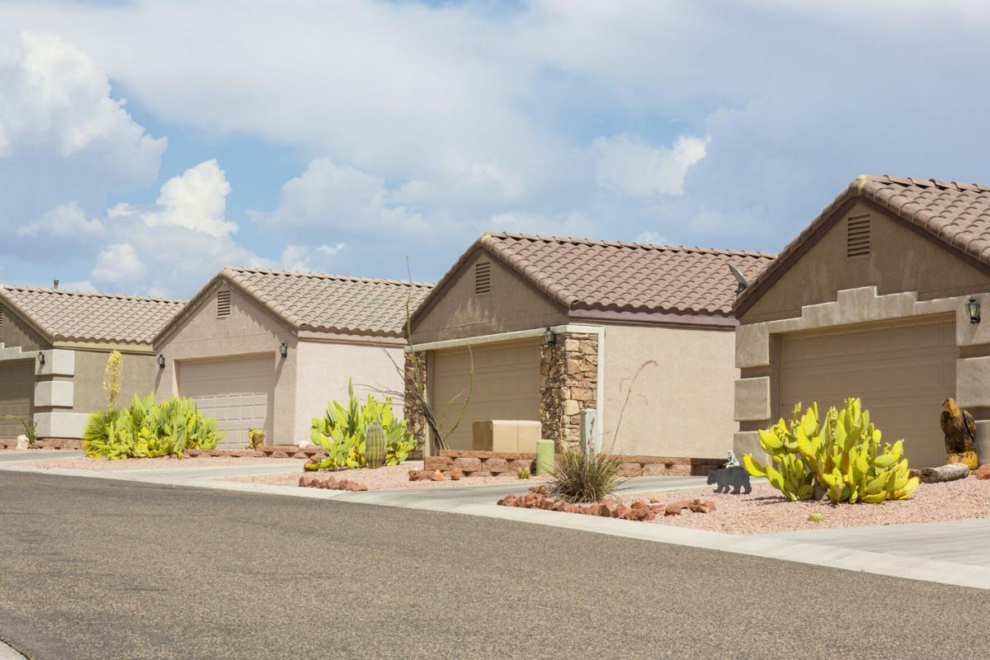Question: My husband and I have been winter visitors in Tucson for many years. We are considering buying a home and permanently staying here. What are the differences between homes here and in Iowa, where we come from?
Answer: Funny you ask that now. A couple of weeks ago, I met with a panel of experts from our list of Rosie on the House Certified Partners to identify the various idiosyncrasies of Arizona’s homes. Many Arizonans come from other parts of our country, if not the world, as you are considering. Our discussion uncovered some of the unique features found and left out of homes.
Basements
You won’t find many basements in Arizona aside from the walk-out lower floor on homes constructed on a hillside where one wall is below grade, two walls are partially below grade, and another is completely above grade. I am talking about fully submerged lower floors below grade on all sides.
Rock: In Tucson and much of the state, caliche can be found. Caliche is caused by soil particles being cemented together by calcium carbonate. It is not as hard as concrete, but it is difficult to dig through and costly to excavate. Construction old timers called this soil “God’s concrete.” Because of this cost, home builders avoid constructing a basement where caliche occurs.
Electric panels
Another unique feature of Arizona homes is placing the electric panels outside. According to the National Electric Code, the main disconnect switch must be outside, so a firefighter can shut off power to a home in an emergency. That makes sense. Then we go a step further and co-locate the subpanels, with all the circuit breakers outside, as well. It is inconvenient when a breaker shuts off, and you need to go outside to turn it back on, especially in bad weather. This was really an issue when GFCI circuits were first introduced, and the circuit breaker was the thing that tripped. Today, the GFCI trips at the outlet, which is a much easier fix.
The cost of co-locating the main panel and the sub-panel is another reason for this phenomenon. I don’t like this arrangement because anyone with access to the outdoor panel can shut off your electricity. Some folks put locks on their panels, but most do not. I recommend that you do.
Millwork
“Millwork” is a word some native Arizonans might not know the meaning of. I am referring to moldings or trim work. More specifically, the lack thereof.
Windows: Since roughly the 1960s, our window surrounds, meaning the head, jambs and sills, tend to be wrapped with drywall. Older Victorian-style homes had copious amounts of window molding. This included three and four pieces of trim work for each window head and sill. Jambs typically had two or three pieces of trim. Elsewhere in the world, even new homes have some trim around the windows.
Doors: The same could be said for doors. The trim work here has been reduced to a simple piece of trim, either clamshell, which is smooth, or a colonial profile that attempts to add depth to a single piece of trim. Most homes elsewhere have more adornment.
Ceilings and floors: Crown molding and baseboards are a rarity in Arizona homes. Celebrating the intersection of a wall and ceiling or the floor is like finding the right hat and pair of shoes for any room.
We don’t do much trim work in Arizona homes.
Prep for weather
Preparation for rain control wasn’t a high priority for homes built during the 1960s, 1970s and some of the 1980s. I am not talking about just leaving off gutters. We have flat roofs without a pitch and parapets. Water just falls to the ground. Until the advent of large subdivisions, Arizona builders often treated rain as an afterthought. Building homes resistant to the desert heat didn’t make the cut either. Many people live in or have seen slump-block homes without insulation. The block formed both the exterior and interior wall surfaces. They crank up the air conditioning as needed. The cost of electricity when those homes were built wasn’t a deterrent as it is now.
The list doesn’t end here. These are just a few more quirks of Arizona homes to think about.
- Drywall texture vs. smooth
- Backyard walls
- No door to the primary bathroom
- Carpet vs. wood
- Landscaping (think flood irrigation)
- Lack of front porches
- Foam roofs
- The famous “Arizona Room”
- Carports
- Screened in porches
Before you purchase a house, do your research regarding the home’s construction and how its maintenance will be different than the one you leave in Iowa.
Source: Tucson
















